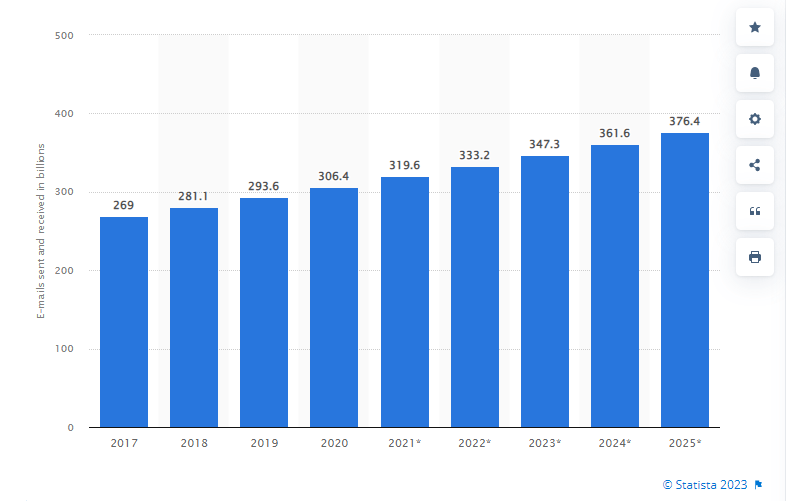Email campaigns play a vital role in the digital marketing efforts of eCommerce and other businesses. Marketers increasingly use them to communicate with customers and boost their conversions and ROI.
If you’re new in this territory and need a guide on how to introduce email marketing into your existing strategy, this article is for you. Find everything you need to streamline a successful email marketing process from definition to benefits and practices.
Let’s start!
What Is Email Marketing?
Email marketing is the process of creating and delivering marketing messages to customers and prospects via email. It was initiated in 1978 by Gary Thuerk, who sent 400 emails to Arpanet users to showcase a new product.
Considering how much of our day we spend in our mailboxes for professional or personal purposes, this channel is the perfect choice for communicating with customers. To ensure that you reap its benefits, creating an email marketing strategy and monitoring it closely over time is significant.
Email Marketing Statistics
Let’s explore some email marketing stats that prove the efficiency of this marketing channel:
- In 2021, approximately 319.6 billion e-mails were sent and delivered daily. This number is estimated to reach 376.4 billion by 2025.
- 49% of survey respondents stated that they’d like to receive promotional emails from their favorite brands every week.
- The average open rate for email newsletters is 21.33% across all industries.
- The percentage of average email deliverability rate is 88.9%.
- The average email ROI for 2023 is $40 for every dollar spent.
- Email automation enables businesses to save time (30%), promote lead generation (22%), and cause an increase in revenue (17%).
- Segmented campaigns brought an increase in revenue close to 760%.
The above data show that successful email marketing campaigns can make a difference for your business. Need more evidence? Please keep on reading.
Email Marketing Advantages
In this section, we’ve added the top benefits of email marketing. Let’s see:
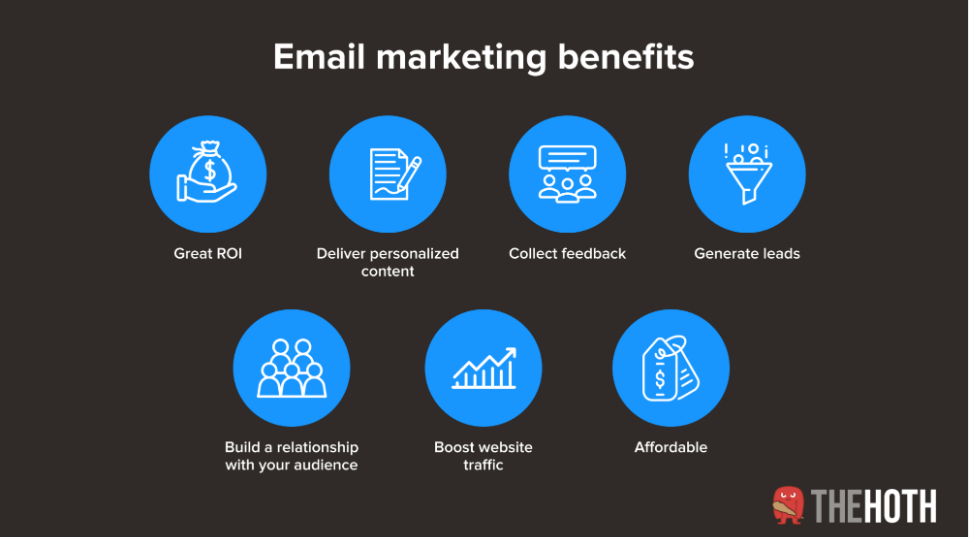
1. Cost-effectiveness
Firstly, email marketing is one of the most affordable tools that let businesses elevate their ROI. All you need to succeed in it is an email marketing tool like Moosend or Mailchimp, with flexible pricing and amazing capabilities to streamline your practices.
Even though it can be a bit pricier compared to other channels like social media, it allows you to send more targeted messages, and its impact is more measurable. Even though some platforms offer free plans, they usually have limited features, so the pricing and feature page should be read in-depth before making a final call.
2. Outreach
One of the significant advantages of email marketing is that you have complete ownership of your subscriber list and can use it for different purposes, such as lead generation or customer loyalty. They enable you to reach a wide audience in simple steps, just with their opt-in.
This is not the case with other channels like social media or your website. It’s hard to predict who will finally run into your posts and messages, while with emails, you have more control.
3. Ease Of Use
Most email marketing services make crafting email marketing campaigns an easy ride. They offer premade templates that are easily customized with drag-and-drop editors without needing coding or design skills. Therefore, this tool is accessible to every marketer capable of creating unique email content with customer and prospect needs in mind.
If you want to ensure that the email marketing service you’re pursuing is easy to use, you can also request a free trial to see for yourself.
4. Personalized Marketing
As mentioned earlier, this channel allows marketers to build personalized emails through the power of email segmentation and dynamic content. These features help businesses send highly targeted messages to current and potential customers based on common characteristics, such as demographics or geographic location.
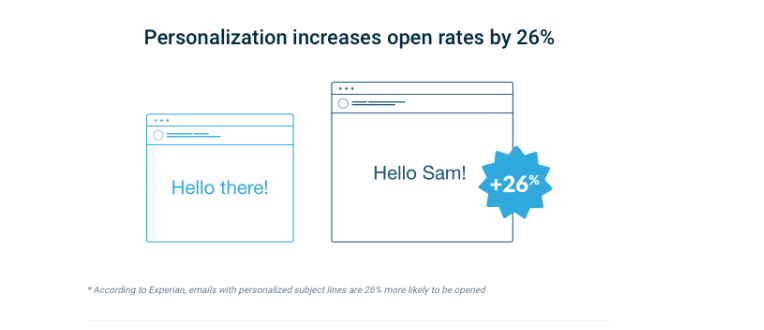
In addition, personalized email subject lines are linked with higher open rates, so the more you target your audience, the better your results.
5. Marketing Automation
Another benefit of this channel is that you can set up automated emails, also known as drip campaigns. This automated series of emails enables businesses to schedule follow-up emails for certain campaigns or actions to nurture their audience at certain times.
For example, you can set up welcome or onboarding email series to get new subscribers and customers ready for success. Moreover, to create and send transactional emails you need an SMTP server which is usually available with most email service providers.
6. Lead Generation/ROI
Email marketing campaigns with interesting content relevant to readers’ needs can translate into higher conversion rates and ROI. This usually depends on the calls to action that are placed on each email campaign.
Overall, CTA buttons should be inviting and attractive enough to make readers click on them. They should stand out from the rest of the text and the copy should be written in actionable language for better results.
7. Customer Loyalty
Through regular and consistent email communications with customers, you can increase retention and loyalty rates in the long run. By sharing promotional offers, information about new products, event invitations and other incentives, you create a stronger bond with old and new customers.
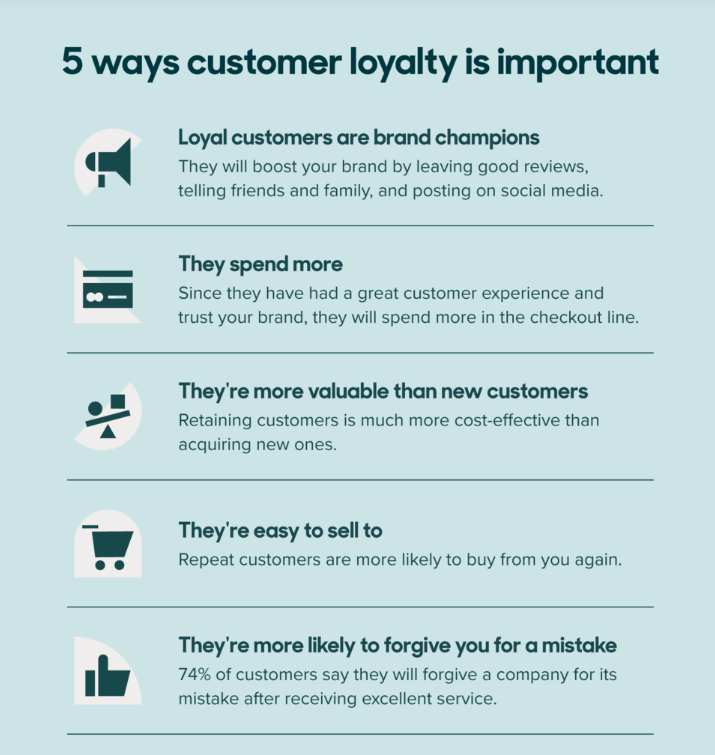
Many eCommerce businesses create thought leadership resources to position themselves in their niche market. If you’re also in this group, you can send dedicated monthly newsletters to nurture your audience, especially if you operate in B2B.
8. Brand Awareness
Lastly, by consistently delivering branded messages via email, you can raise awareness around our products/services and make our subscribers remember us.
Long story short, the more meaningful interactions consumers have with your brand, the more likely they will support and resort to you in the future.
Email Marketing Disadvantages
Even though email marketing campaigns can be game-changing for your business, some parts can go wrong if not treated appropriately. Let’s see:
Spam
One of the main foes of email marketing is the spam folder. There are many reasons why your email can be flagged as spam based on the CAN-SPAM act. Here are some of them:
- Your recipients marked your email content as spam
- Your subject lines don’t reflect the email content
- You don’t have your recipients’ opt-in
- Your IP address has been used for spam
- You have low email usage and engagement
Thankfully, there are many practices to follow to surpass the spam filters. You can also utilize an email spam checker to increase your deliverability rates. Sometimes, poorly designed email campaigns never make it to the subscribers’ mailboxes. This can also happen due to errors in the email addresses or spammy content.
File Size Issues
Emails that include files with large sizes usually take time to load, and for certain email clients, the results can be pretty damaging. Before adding creative elements to your next campaign, check the sizes and use a file compressor like TinyPNG for better performance.
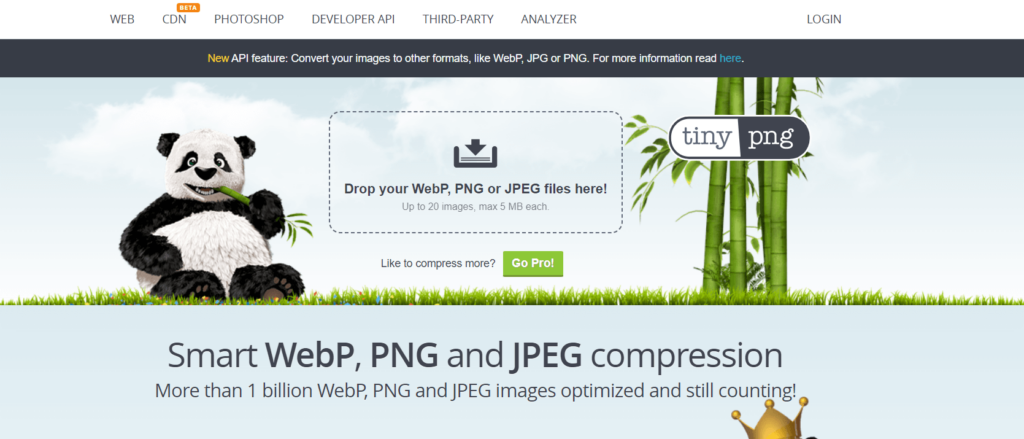
As for videos and GIFs, use them wisely to secure a top-notch user experience, as the same loading rules apply. You don’t want your readers to leave your emails for the wrong reasons.
Unresponsiveness
Your email subscribers will have different ISPs, and it’s not always easy to secure a stellar user experience for all desktop and mobile devices. Most ESPs enable you to check how your email campaigns look for different devices, but it’s hard to keep everything under control.
To overcome this barrier, it’s wise to include a plain text version for more outdated ISPs.
Competition
Finally, with so many emails landing in our mailboxes daily, it’s easy to get lost in the noise and miss the campaigns from our favorite brands.
To ensure maximum open and conversion rates, businesses use clear sender names, create intriguing subject lines, and follow a consistent scheduling plan.
Top Email Marketing Campaign Types
What email newsletter types should you send to your subscribers for maximum results? We’ve collected the important ones below:
1. Welcome Email
This is the first email new subscribers should get when they join your email marketing list. They usually receive high email open and click-through rates, so it’s essential to include the right content to make a great start. Look at the example by Pitch below, including links leading to important pages:
Subject Line: Hello from Pitch

If you’re in B2B or provide users with a service, you can also set up an onboarding email, showing your new users how to make magic with it and get them ready for success.
2. Promotional Emails
This category fits every email campaign that directly aims to increase your conversions and sales. For example, you can present customers and prospects with new products, suggestions based on previous purchases, or discounts/coupons.
Subject Line: Get ready to rock. Your Men’s Houdini® Jacket is back in stock.

3. Abandoned Cart Emails
Cart abandonment emails are a must for eCommerce businesses, as they’re highly timely and relevant to your customers’ needs. Briefly, your visitors receive a follow-up email message after leaving products in their cart, reminding them to complete their purchase as soon as possible.
Overall, 45% of cart abandonment emails are opened, and 21% receive click-throughs. Let’s see an example by American Giant:
Subject Line: Did you see something you liked?
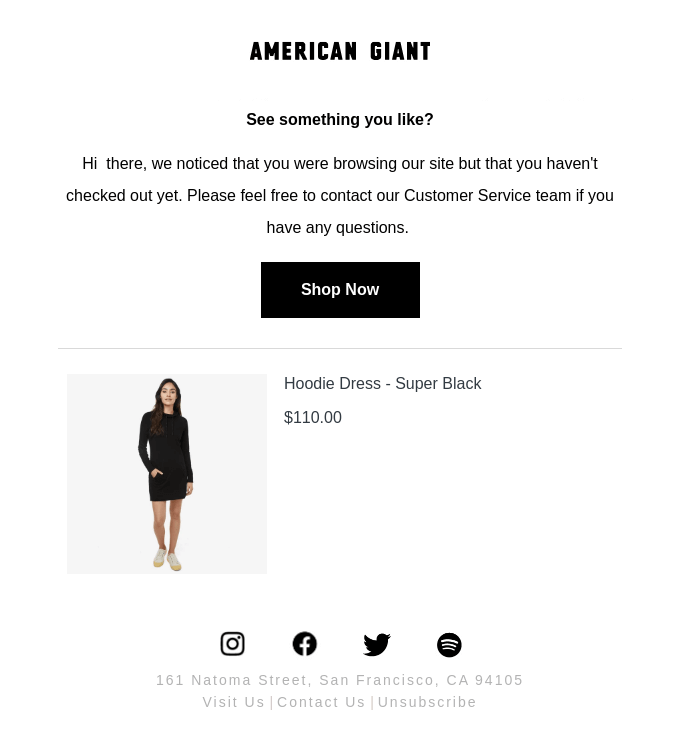
4. Informational Email Campaigns
From company updates to webinar invitations and new product launches, these email campaigns aim to nurture your audience and boost customer loyalty and retention. You can decide what’s best to provide them based on your buyer persona’s needs and your niche market.
For example, this is an email webinar invitation by Vimeo:
Subject Line: Join us for a webinar with Asana
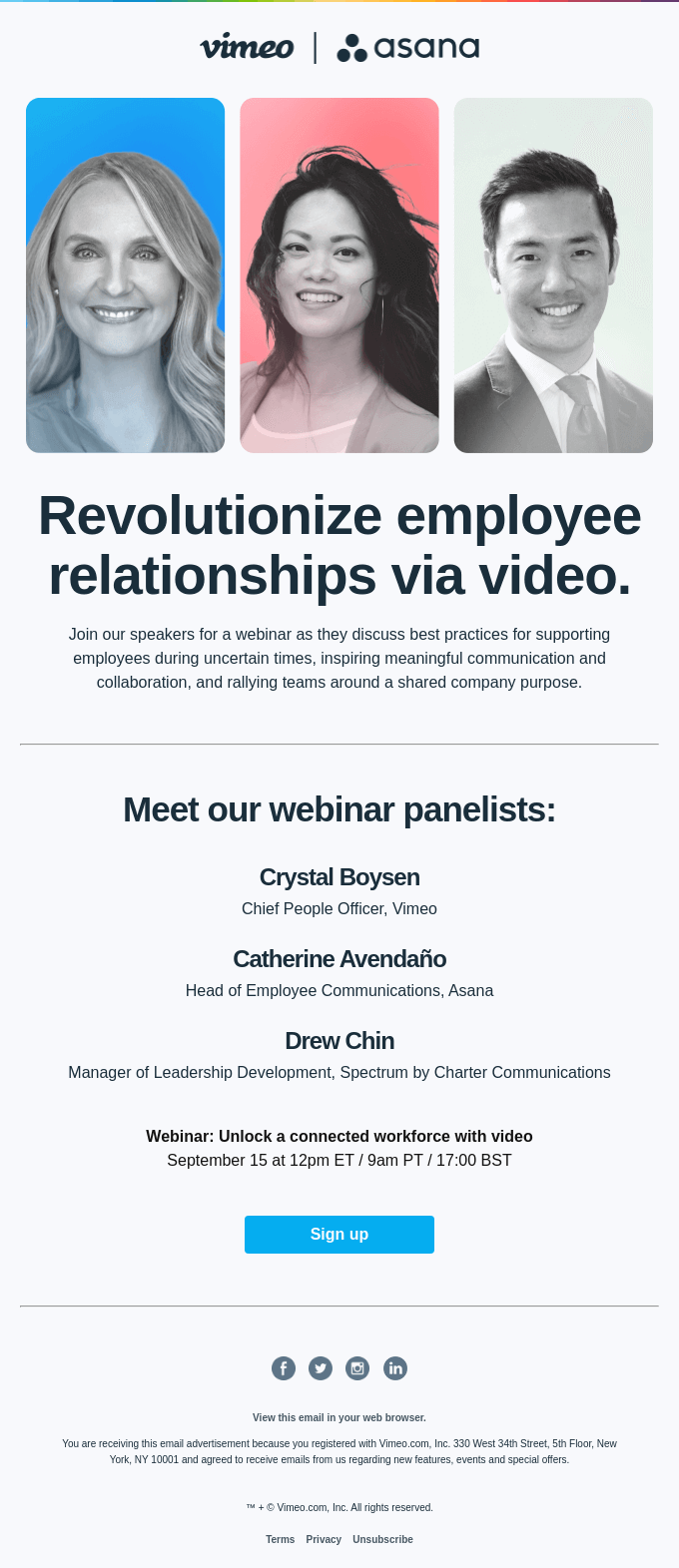
5. Re-engagement Campaigns
Also known as win-back emails, these email newsletters target inactive or churned subscribers to bring them back into the game. This tactic helps businesses to drive customer retention and restore revenue before it’s too late.
It’s up to you to decide the number of emails you’ll send to your subscribers before removing them from your list, just remember not to overdo it as you may trigger the opposite results.
Here’s a relevant email campaign by Cuisinart:
Subject Line: Pssst…we have a question for you.
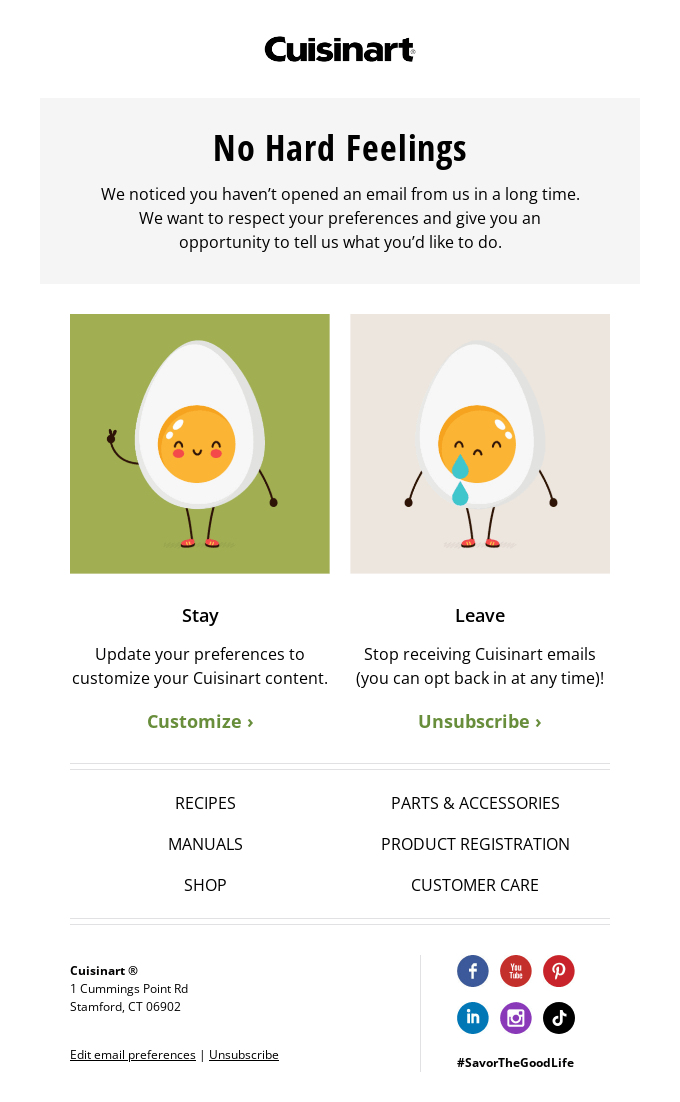
6. Seasonal Newsletters
Although these email types belong in the promotional bucket, we created an exclusive category to emphasize its importance for small businesses and most eCommerce brands. Email marketers make the most of high sale periods like Christmas, Black Friday or Valentine’s Day to maximize their revenue.
However, remember that competition is very high these days, so the one with the strongest subject line and content wins. In the next section, we’ll explain how to build compelling email campaigns. For now, let’s see a great New Year’s Eve newsletter example by Dove:
Subject Line: New Year, new grooming routine

7. Feedback/Survey Email Campaigns
Ιf you want to optimize your business operations, it’s wise to collect customer feedback regularly to see what works or needs extra care. You can use email campaigns to reach a wide audience and target different people based on the data you’d like to collect.
Feedback emails should be concrete and straightforward, and so is the survey itself. Nowadays, people have busy lives and a short attention span; therefore, it’s important to make them short and relevant.
The example below is made by Target:
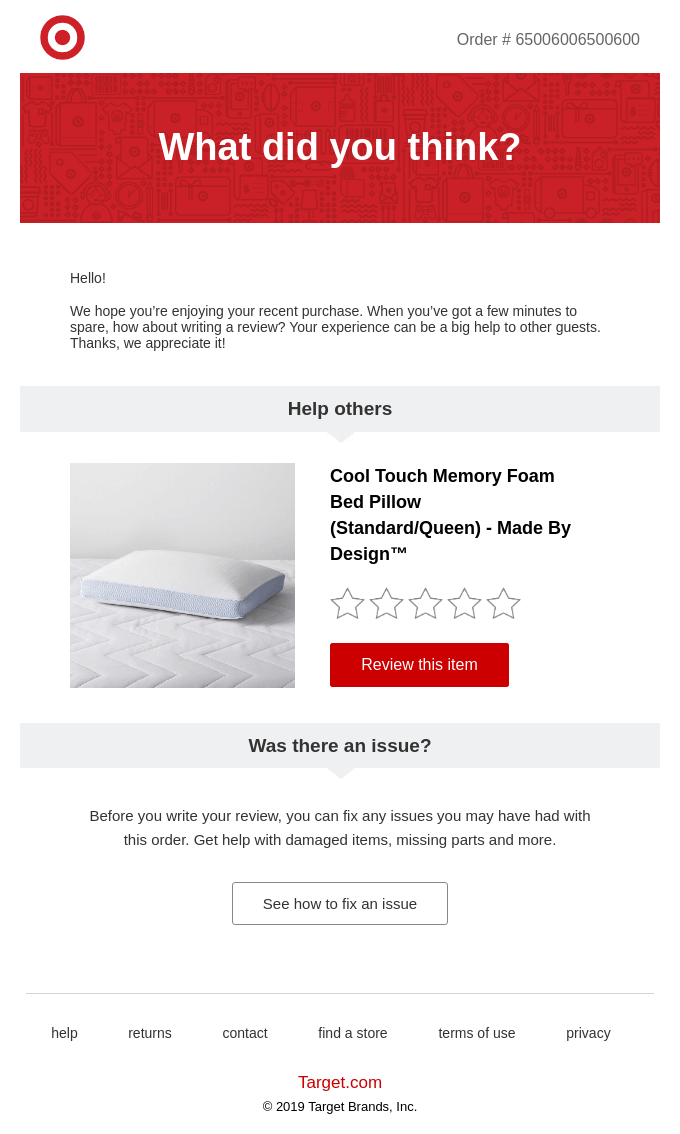
8. Transactional Emails
Transactional emails are messages triggered when customers complete certain actions, such as a purchase or email sign-up. For example, welcome and confirmation emails belong to this list.
All in all, these emails are mandatory to ensure your customers that their actions are completed. Plus, they receive high open rates and contribute to good list hygiene and brand awareness. To set them up, you need an SMTP server, which comes together with most email service providers.
Here’s a shipping confirmation email from Laird Superfood:
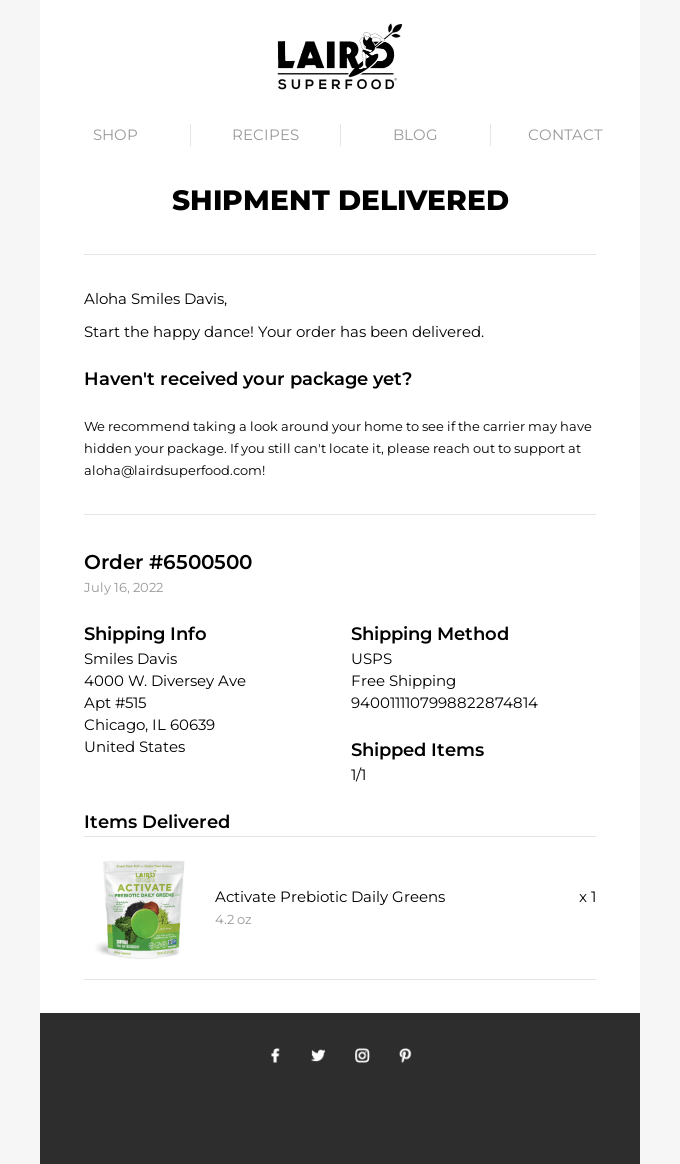
Email Marketing Best Practices For Beginners
If you’re ready to create the first email marketing campaigns to get in touch with current and prospective customers, we’ll walk you through the main steps:
1. Set Your Objectives
Before anything else, it’s important to set concrete and measurable goals to see how email newsletters can translate into business ROI. Each campaign can serve a different purpose, such as direct sales or customer retention. Define the main one to adapt your messaging accordingly.
Moreover, you should determine how your email marketing efforts will align with other promotional tactics, such as social media and content marketing. For instance, you can add social media links on the email footer or set up a dedicated campaign with your latest blog posts as we do at Moosend:
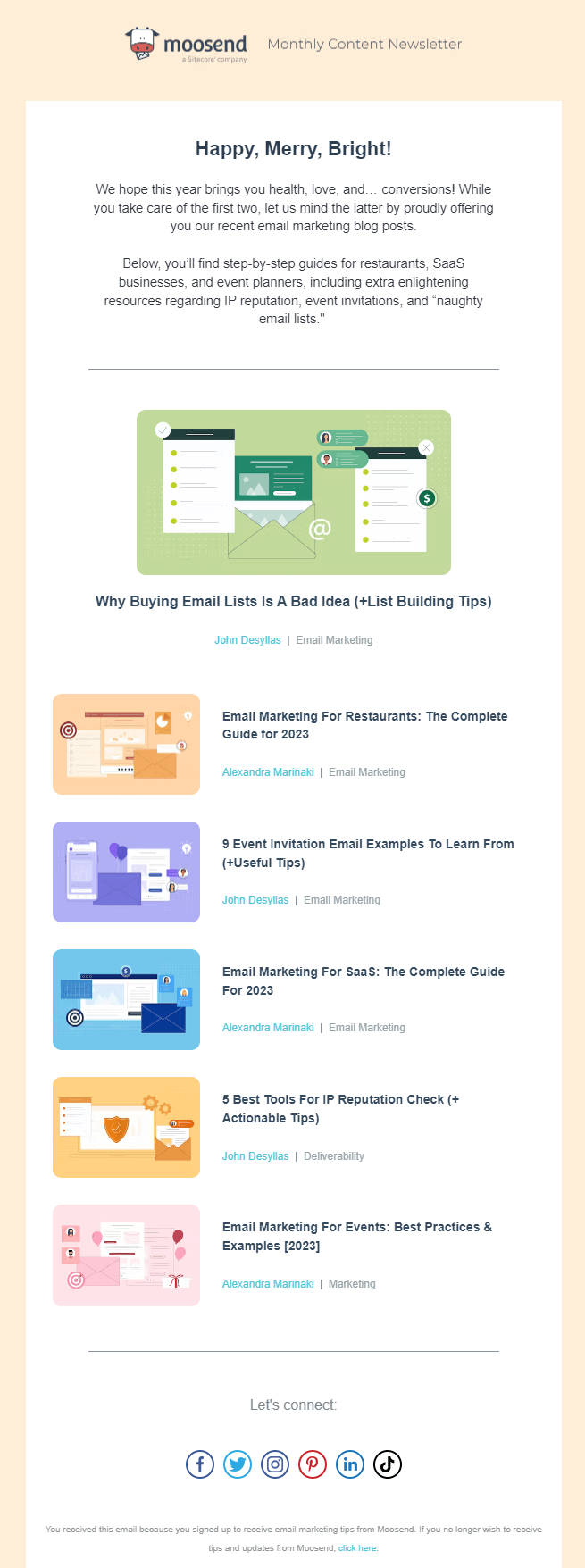
For practical goal setting, you can follow the well-known SMART framework, which stands for specific, measurable, achievable, relevant, and timely. This will help you build a more structured email marketing process.
2. Build Your Email Lists
So, how can you start collecting the precious email addresses of customers and prospects? Here are some main tactics to follow:
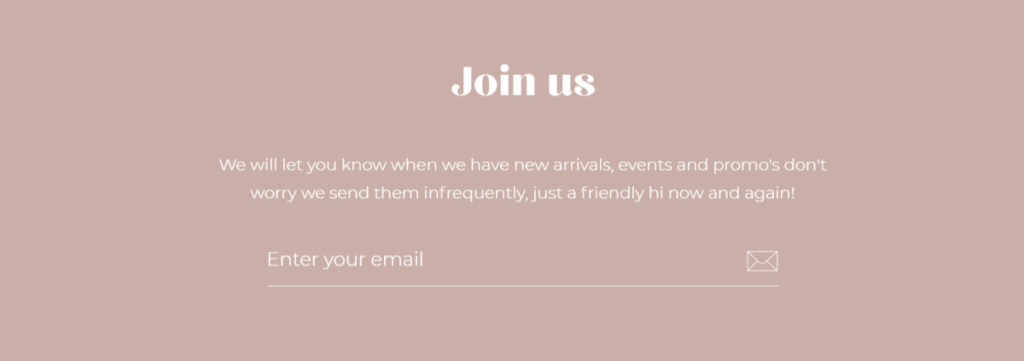
Via: Hebe Boutique
- Include pop-up or static signup forms on your website
- Collect emails at the checkout page of your eCommerce store
- Share landing pages on social media
- Schedule giveaways in return to email addresses
- Create lead magnets with interesting resources
Remember, to start mailing your recipients, it’s essential to get their opt-in first; otherwise you may hurt your brand reputation and see many of your emails end up in spam. Moreover, you should conduct email list cleaning on a regular basis to remove inactive recipients and sustain a healthy deliverability rate.
3. Choose An Email Marketing Platform
There are many email marketing platforms to choose from suited to different business industries and needs. On the one hand, this is exciting as there are plenty of opportunities, but how can you ensure that the one you choose is ideal?
First, you need to determine what features you’d like to obtain. Here’s a list with the essentials to help you out:
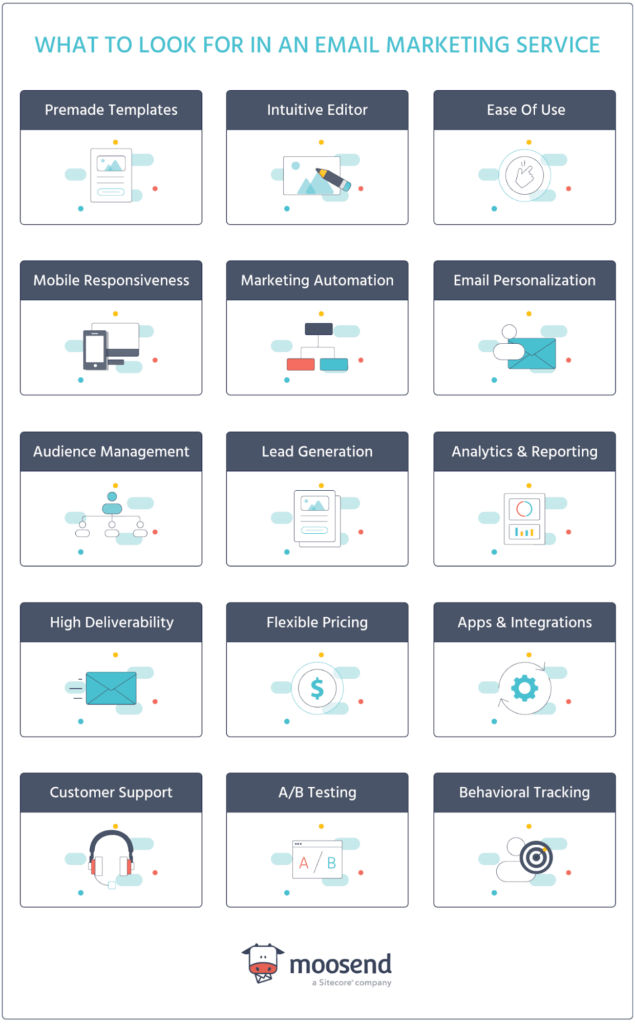
Once you find the services that match you, it’s time to visit their pricing page. Even though some platforms offer free email marketing plans, they are usually limited and will require you to upgrade soon to access important features like integrations, A/B Testing, and segmentation.
Ready to get your email marketing engine going? Sign up for a Moosend account today and experiment with our free trial!
4. Design Branded Campaigns
Email design doesn’t have to be a time-consuming task that feels like a nightmare. Email marketing platforms provide users with email templates that are fully customizable with no coding or design skills needed.
Overall, a perfect email campaign consists of:
- A clear layout – e.g., inverted pyramid, F-shaped
- Email footer including important business details and an unsubscribe button
- A distinct and attractive call-to-action button
- Imagery, videos, or GIFs for more interaction
- Clear and safe email font
- Evenly distributed and exciting copy
In short, align your design with other marketing channels to create a consistent experience across platforms to fulfill your reader’s expectations. Here’s a short yet powerful email example by Hodina for inspiration:
Subject Line: Our Biggest Sale of the Year!
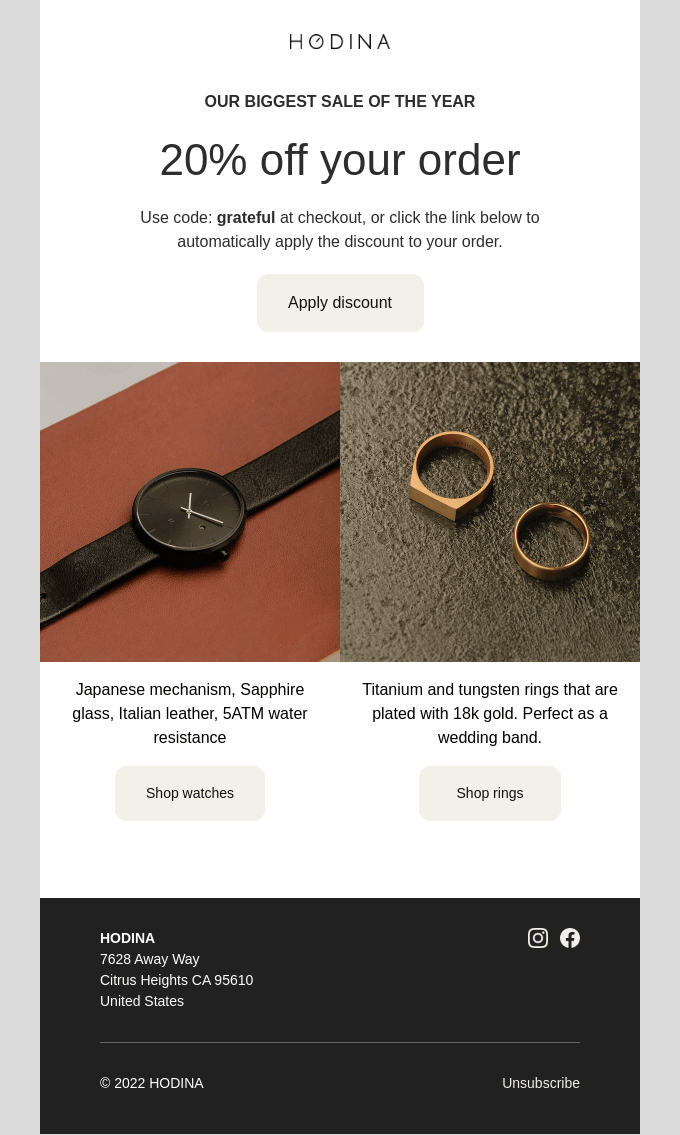
5. Nail Your Copywriting
Copywriting is one of the more substantial elements of an effective email campaign. It should reflect your brand tone and communicate the goal of your campaign clearly and creatively.
Everything starts with the subject line, the copy line that appears first in your recipients’ mailbox and sets the tone for your campaigns. It should be around 41 characters, intriguing and reflective of the email content. Next comes the preview text, which includes additional information about the newsletter.
As for the main email content, it should be straightforward, interesting, and relevant to your audience. If you include diverse information, it’s best to add head titles to clarify each section. Don’t hesitate to add funny elements and a sense of urgency to make your readers click through by all means.
Here’s an amazing example by Levain Bakery that indulges readers in joining the cookie joy:
Subject Line: Your inbox just got sweeter

Marketers shape each email campaign with a desired action for recipients in mind, which serves a specific goal. This call-to-action, whether it’s formed as a hyperlink or button, should have an inviting and urgent tone to work better.
6. Personalize Your Content
Not every contact on your email list has the same interests and needs. Moreover, bulk emails don’t seem to work as well as targeted ones, that’s why it’s important to acquire an audience management feature.
Email segmentation lets you create different audience groups based on shared characteristics, such as demographics, locations, and previous purchase history, among others. This way, you’ll increase open and click-through rates and get everyone happy.
To personalize your campaigns even more, add the recipient’s name in the subject line and use dynamic content to serve different versions of an email section to different personas. You can also add a Preference Center at the sign-up form to send content your subscribers are highly interested in.
For example, look at the two different images based on gender that Northern Trail set up:
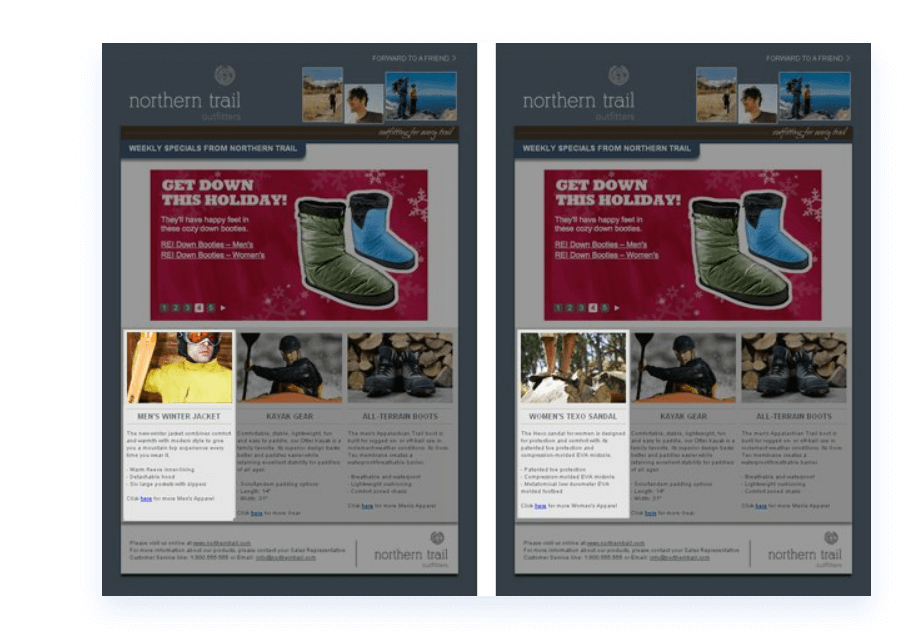
7. Create Automated Workflows
Email marketing allows you to nurture your audience and save time simultaneously due to its marketing automation features. You can set up autoresponders and email workflows to deliver timely and relevant campaigns based on your user actions.
For example, when someone subscribes to your mailing list, you can set up a welcome email series with follow-up emails that will prove useful to your audience and ultimately lead to elevated conversion rates.
Wondering what benefits email marketing automation can offer you? Look at the graph below:
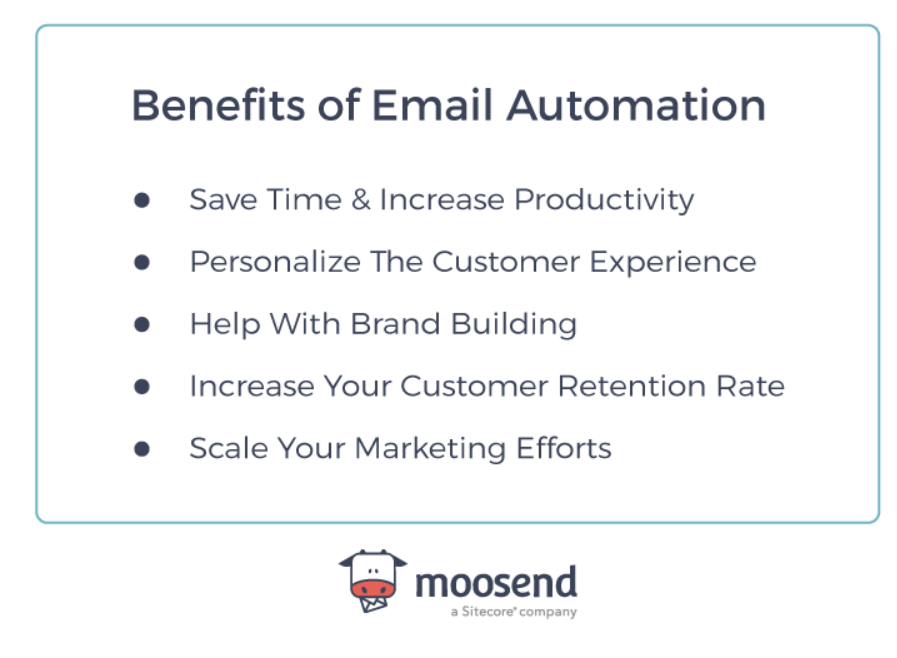
8. Monitor Your Metrics
One of the biggest pros of email marketing compared to other channels is that its performance is measurable, and you can monitor what works and what needs more care. Pick an email marketing software with excellent reporting and analytics tools, such as custom reporting to track your success.
Here are some significant email metrics to keep an eye on:
- Email open rates
- Soft and hard bounces
- Spam complaints
- Unsubscribe rate
- Click-through rate
- Email ROI
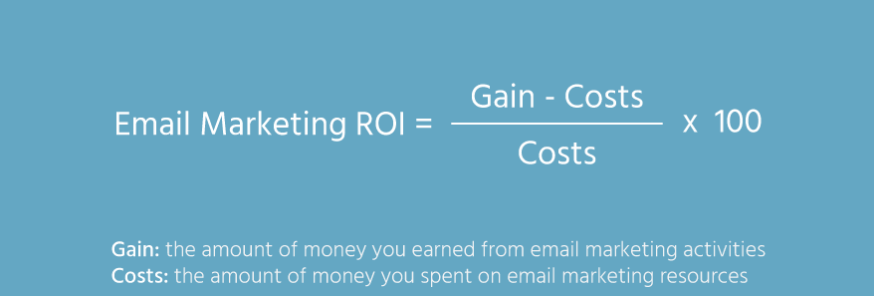
You can also integrate your software with other platforms, such as your CRM solution or Google Analytics, to dive more into essential data and make smarter business decisions.
9. Run A/B Testing
If you are unsure about a certain email element and how it will impact your audience’s behavior, you can resort to A/B Testing. With this feature, you can test two variations of the same email element – e.g., the subject line – to see which appeals to your subscribers the most.
After that, the winning version will be automatically sent to most of your subscribers to increase your open rates.
The Takeaways
In a nutshell, email marketing gives you plenty of assets to share your messages successfully with your audience. Moreover, it’s easy to use, and everyone can thrive with it if they have a creative mindset and are keen on detail, without design or coding skills needed.
If you’re ready to enter the email marketing land, we have the best solution for you at an affordable price. Sign up for a Moosend account today and explore our amazing features for free.
Email Marketing FAQs
Let’s see what internet users want to learn about email marketing the most:
1. What are the types of email marketing?
Here are some notable email marketing campaign types: 1) Welcome email, 2) Promotional email, 3) Abandoned cart campaigns, 4) Informational email, 5) Re-engagement, 6) Survey emails, and 7) Transactional emails.
2. What is the average open rate for email marketing?
For 2022, the average open rate was 21.33% across all industries.
3. What is A/B testing in email marketing?
It’s a method that helps you find which email campaign version will be more effective for your audience and send it out most recipients in your list.
4. What is the definition of email marketing?
It’s the process of creating and sending marketing messages to customers and prospects via emails.
The post What Is Email Marketing? A Beginner’s Guide [2023] appeared first on Email Marketing Automation Platform for Thriving Businesses.
